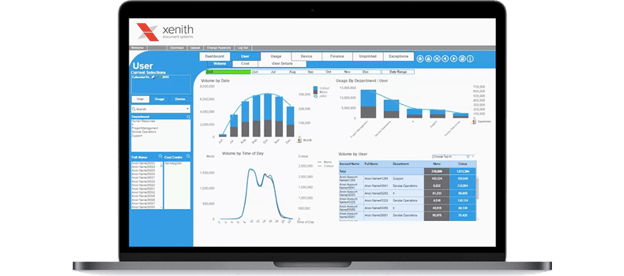Stay up to date with our latest news and insights
Supporting description on the types of content that feature in the blog.
20 February 2018

The volume of data in today’s digital society is both a blessing and a curse. Businesses can gain a deeper insight than ever before into customer, employee and market behaviour - providing they’re not overwhelmed in the process.
Despite this, a data-driven approach to improving the manner in which your business operates is the best way to find the most inefficient processes and digitise them.
This will help validate and measure gains made by processes that have already been digitised, but isn’t something you can do without the right tools.

Managed print services (MPS) generates data that enables businesses to find out how much people are printing, but tools such as user analytics also reveal the associated costs and some surprising findings.
For instance, imagine being able to identify the disparity between estimated and actual print volumes, or the usage per printing device within a single department or building. User analytics allows you to do just that.
With user analytics, you can go far deeper and look into exactly who’s printing what and when.
This opens up opportunities to tighten security, spread the best printing practices company wide and increase automation, but it also means you can ensure previous changes are having the desired impact.
By monitoring printer usage, you can assess whether or not the digital transformation efforts you’ve already undertaken are taking root.
For digital transformation to be successful, it needs to be embraced by the whole company and woven deeply into the culture of the business.
Document analytics uncovers the story behind your users and devices, and the role printed documents and there associated processes play in your organisation will finally be revealed.
Modern analytics tools give you ultimate flexibility, too. For instance, customisable dashboards enable you to consolidate key information into an intuitive, single view which highlights key trends.
User analytics will improve your digital transformation strategy considerably and help you make better management decisions.
It does this by finally making sense of the reams of data that flow through every business. Prior to the analytical tools of today, teams would have to wade through data in order to find what they want.
Now, your digital transformation story is laid bare, enabling you to encourage positive disruption and ensure an end to cumbersome manual processes.
Supporting description on the types of content that feature in the blog.

20-09-2024
Digital document management tools offer a range of compelling benefits for businesses, including a PDF editor, a file converter and a form generator. You can also integrate with digital signatures qui...

20-09-2024
When choosing a SaaS software to deal with your company’s PDF documents and enable forms to be digitally sent and signed, you’ll want a product that’s user-friendly and easy to use. With Tungsten’s Po...

11-07-2024
Belkin is a global technology company that provides high-quality electronics products, from wireless chargers to power banks. Their people-centric approach and best-in-class functionality have positio...